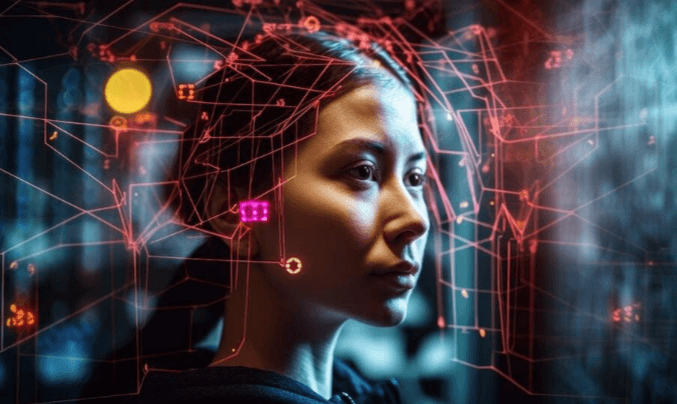What are the implications of deepfake technology on information authenticity and media trust?

Introduction
Deepfake technology, a product of advanced artificial intelligence, has introduced significant challenges to the realms of information authenticity and media trust. By enabling the creation of highly realistic yet entirely fabricated content, deepfakes have the potential to undermine the very foundations of truth and trust in our digital world. This article delves into the various implications of deepfake technology, examining its effects on society, media, and privacy, and exploring potential solutions to mitigate its adverse impacts.
Understanding Deepfake Technology
Deepfake technology leverages deep learning and neural networks to create convincing but fake audio, video, and images. This technology can manipulate or generate content to such an extent that it becomes difficult to distinguish between what is real and what is fabricated. While deepfakes have legitimate applications in entertainment and art, their misuse poses serious threats.
The Evolution of Deepfake Technology
Initially developed for entertainment and creative purposes, deepfake technology has rapidly evolved. Early deepfakes were relatively easy to spot due to imperfections, but advancements in AI have made them increasingly sophisticated. Today, deepfakes can mimic voices, facial expressions, and mannerisms with remarkable accuracy, making detection a significant challenge.
Impact on Information Authenticity
Deepfake technology has profound implications for information authenticity. By creating realistic yet false content, deepfakes can spread misinformation and disinformation, eroding the trust in legitimate sources of information. This can lead to confusion, misinformation campaigns, and a general mistrust of digital media.
Threats to Media Trust
The proliferation of deepfakes undermines the trust in media. Journalists and news organizations face the daunting task of verifying the authenticity of content in an environment where deepfakes can easily circulate. This not only challenges the credibility of individual stories but also damages the overall trust in the media industry.
Political and Social Implications
Deepfakes can have significant political and social implications. They can be used to create fake news, manipulate public opinion, and influence elections. The ability to fabricate videos of politicians saying or doing things they never did can have profound consequences for democracy and social stability.
Psychological Impact on Society
The psychological impact of deepfakes on society is considerable. As people become more aware of the existence and sophistication of deepfakes, trust in visual and auditory evidence diminishes. This skepticism can lead to a phenomenon known as “reality apathy,” where individuals question the authenticity of all information, creating a pervasive sense of doubt.
Challenges for Journalism and Reporting
Journalism and reporting are particularly vulnerable to the implications of deepfake technology. The speed at which news is disseminated means that fake content can spread rapidly before it is debunked. This puts pressure on journalists to verify sources and authenticity rigorously, often with limited resources.
Legal and Ethical Considerations
The rise of deepfake technology also brings about significant legal and ethical considerations. Laws and regulations are struggling to keep pace with the technology. Issues such as consent, defamation, and intellectual property rights are complex and require robust legal frameworks to address the misuse of deepfakes.
Deepfakes and Cybersecurity
Deepfakes pose a substantial threat to cybersecurity. They can be used to bypass security systems, create fake identities, and commit fraud. As the technology becomes more accessible, the potential for its use in cyberattacks and other malicious activities increases.
Mitigating the Impact of Deepfakes
Mitigating the impact of deepfakes requires a multi-faceted approach. Technological solutions, such as AI-based detection tools, are essential. Additionally, public awareness and education about the existence and dangers of deepfakes can help individuals critically evaluate the content they encounter.
The Role of Technology in Combating Deepfakes
Advanced technology, including AI and machine learning, plays a crucial role in combating deepfakes. Researchers are developing algorithms to detect subtle inconsistencies and artifacts that betray deepfake content. These tools are essential for maintaining information authenticity in the digital age.
Educational Initiatives and Public Awareness
Educational initiatives aimed at raising public awareness about deepfakes are vital. By understanding how deepfakes work and their potential impact, individuals can become more discerning consumers of digital content. Media literacy programs can equip people with the skills to critically analyze information sources.
Policy and Regulation
Effective policy and regulation are crucial in addressing the challenges posed by deepfakes. Governments and international organizations need to establish clear guidelines and laws to manage the creation and dissemination of deepfakes. This includes measures to protect individuals’ rights and prevent misuse.
Collaboration Between Stakeholders
Collaboration between various stakeholders, including technology companies, media organizations, and governments, is essential in combating deepfakes. Joint efforts can lead to the development of better detection tools, stricter regulations, and comprehensive educational programs.
Ethical Use of Deepfake Technology
Promoting the ethical use of deepfake technology is also important. While deepfakes can be harmful, they also have positive applications in fields such as entertainment, education, and research. Encouraging responsible use and innovation can help harness the technology’s potential while mitigating its risks.
Case Studies of Deepfake Misuse
Examining case studies of deepfake misuse can provide valuable insights into the technology’s impact. Instances of political manipulation, identity theft, and social harm illustrate the need for robust countermeasures and highlight the real-world consequences of deepfakes.
Future Trends in Deepfake Technology
The future of deepfake technology is uncertain, but it is likely to continue evolving. Anticipating future trends and developments can help society prepare for and mitigate potential risks. Ongoing research and innovation are essential to staying ahead of the curve.
The Importance of Digital Literacy
Digital literacy is becoming increasingly important in the age of deepfakes. Individuals must be equipped with the skills to navigate the digital landscape, recognize deepfakes, and critically evaluate information. Enhancing digital literacy can help build resilience against misinformation.
Conclusion
The implications of deepfake technology on information authenticity and media trust are far-reaching and complex. While deepfakes pose significant challenges, a combination of technological solutions, educational initiatives, and regulatory measures can help mitigate their impact. By fostering collaboration and promoting digital literacy, society can navigate the challenges posed by deepfakes and uphold the principles of truth and trust in the digital age.
FAQs
What are deepfakes and how are they created?
Deepfakes are synthetic media created using deep learning algorithms. They can manipulate or generate audio, video, and images that appear highly realistic. These are created by training neural networks on large datasets of real media to generate or alter content.
How do deepfakes affect media trust?
Deepfakes undermine media trust by making it difficult to distinguish between real and fake content. This can lead to widespread misinformation and erode confidence in legitimate news sources, challenging the credibility of journalism.
What are the political implications of deepfake technology?
Deepfakes can be used to create fake news and manipulate public opinion, potentially influencing elections and political processes. They can fabricate events or statements by politicians, which can have serious consequences for democracy and social stability.
How can deepfakes be detected?
Detecting deepfakes involves using advanced AI and machine learning algorithms to identify subtle inconsistencies and artifacts that are not visible to the naked eye. Ongoing research is focused on improving these detection tools.
What legal measures are being taken to address deepfakes?
Legal measures to address deepfakes are still developing. Some jurisdictions are creating laws to criminalize the malicious use of deepfakes, focusing on issues such as consent, defamation, and fraud. However, comprehensive global regulations are needed.
How can individuals protect themselves from deepfake misinformation?
Individuals can protect themselves by enhancing their digital literacy, staying informed about the existence and risks of deepfakes, and critically evaluating the content they encounter. Awareness and education are key to recognizing and mitigating the impact of deepfakes.




